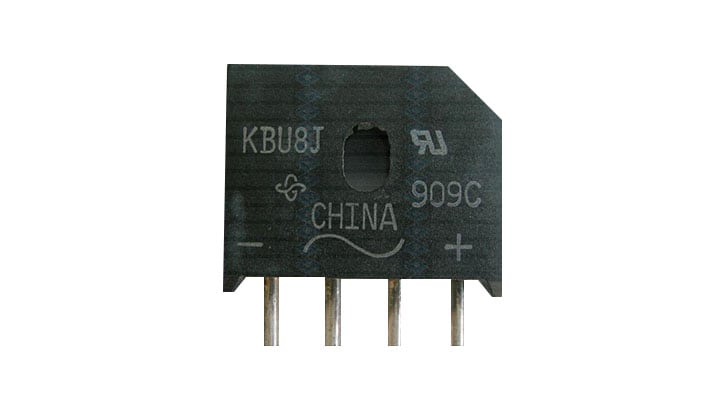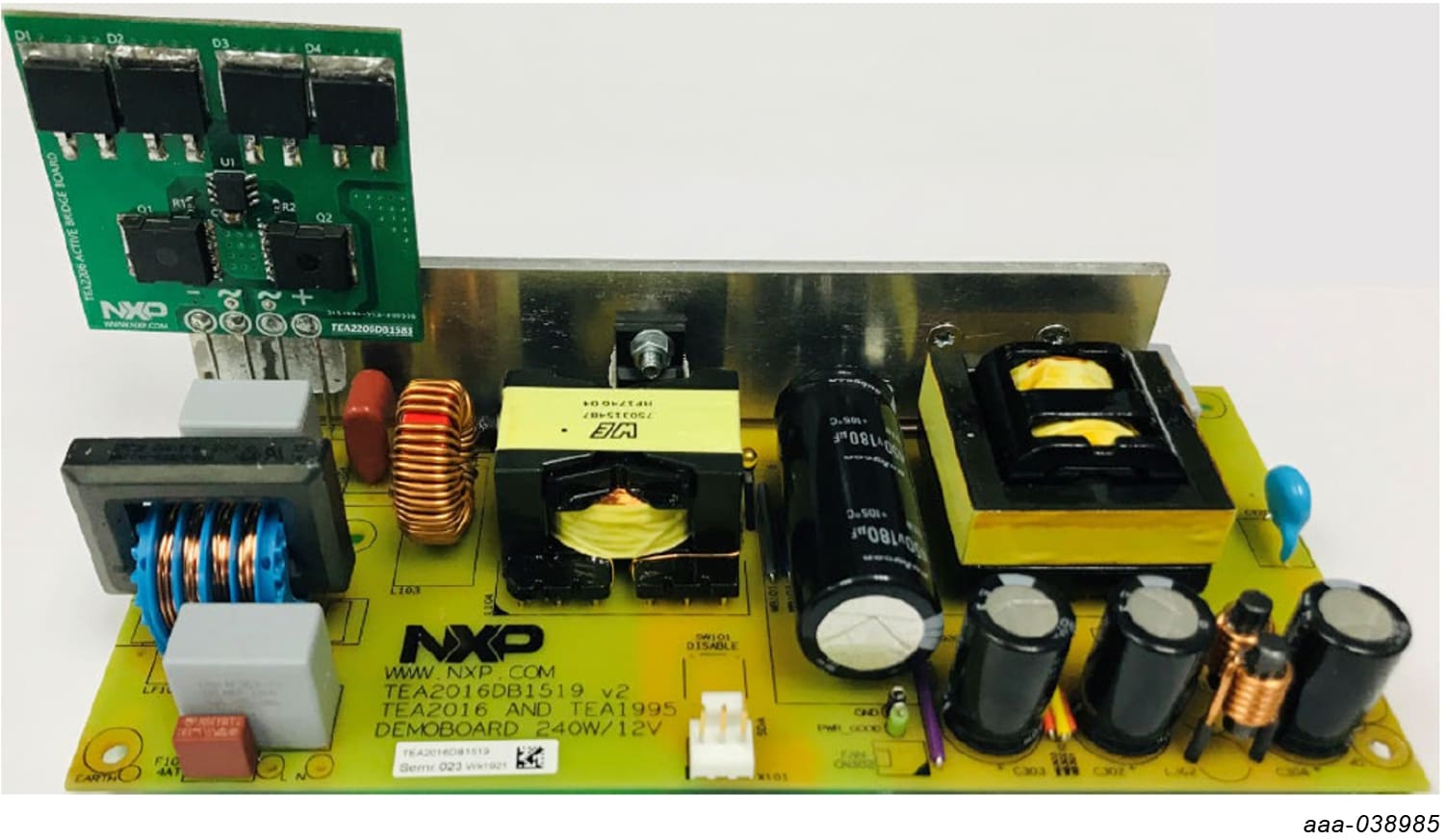Getting Started with the TEA2206DB1583
Contents of this document
-
Out of the Box
-
Get Hardware
-
Configure Hardware
Sign in to save your progress. Don't have an account? Create one.

Purchase your TEA2206T
1. Out of the Box
The NXP analog product development boards provide an easy-to-use platform for evaluating NXP products. The boards support a range of analog, mixed-signal and power solutions. They incorporate monolithic integrated circuits and system-in-package devices that use proven high-volume technology. NXP products offer longer battery life, a smaller form factor, reduced component counts, lower cost and improved performance in powering state-of-the-art systems.
This page will guide you through the process of setting up and using the TEA2206DB1583 demo board.
2. Get Hardware
2.1 Board Features
- Elimination of forward conduction losses of the diode rectifier bridge
- Very low IC power consumption (2 mW)
- Directly drives two rectifier MOSFETs
- Very low external part count
- Integrated X-capacitor discharge (2 mA)
- Self-supplying
- Undervoltage lockout (UVLO)
- Drain-source overvoltage protection for all external power MOSFETs
- Gate pull-down currents at start-up for all external power MOSFETs
2.2 Board Description
The TEA2206T is an active bridge rectifier controller for replacing the two low-side diodes in the traditional diode bridge with MOSFETs. Using the TEA2206T with low-ohmic high-voltage external MOSFETs significantly improves the efficiency of the power converter as the typical rectifier-diode forward conduction losses are reduced by 50%. Efficiency can improve up to about 0.7% at 90 V (AC) mains voltage. The TEA2206T is fabricated in a silicon-on-insulator (SOI) process.
3. Configure Hardware
3.1 Configure Hardware
The TEA2206DB1583 demo board contains two 600 V, 28 mΩ MOSFETs and four 600 V, 20 A diodes. It makes the board suitable for universal AC input and output power applications of several hundreds of watts. The TEA2206DB1583 demo board contains four leads that can easily replace a traditional diode bridge. The inner two leads are connected to AC main lines. The outer two leads are connected to positive and negative rectified voltages. These four leads are pin-to-pin with typical bridge-rectifier diodes pins.
The following figure shows the difference between bridge diodes and active bridge configurations.


The following figure shows an example of the TEA2206DB1583 demo board mounted on an NXP Semiconductors TEA2016DB1519 demo board.

Design Resources
Additional Resources
Tool Summary Page
The tool summary page for TEA2206DB1583 board is at TEA2206DB1583.
The page provides overview information, technical and functional specifications, ordering information, documentation and software. The Get Started guide provides quick-reference information applicable to using the TEA2206DB1583 board, including the downloadable assets.
References
In addition to our TEA2206T: Active bridge rectifier controller page, you may also want to visit:
Product pages:
- TEA19161T: Resonant Power Supply Control IC
- TEA2016AAT: Digital LLC+PFC Combo Controller for Resonant Power Supply
- TEA19162T: PFC Controller
- TEA1995T: GreenChip Dual Synchronous Rectifier (SR) Controller
- TEA2095: GreenChip Dual LLC SR Switching Controller
- TEA2206T: Active Bridge Rectifier Controller